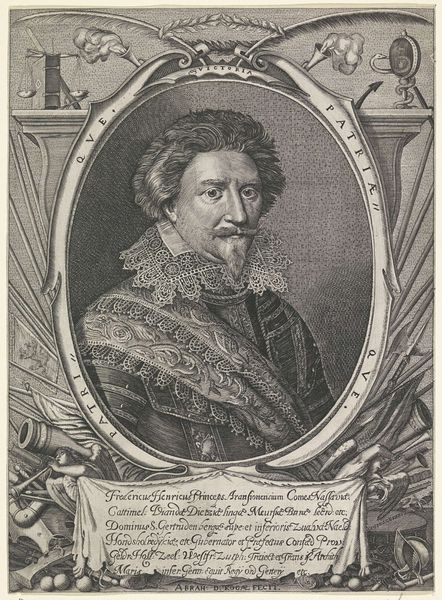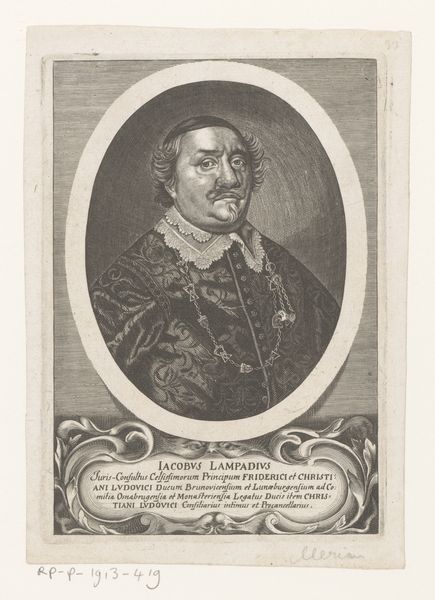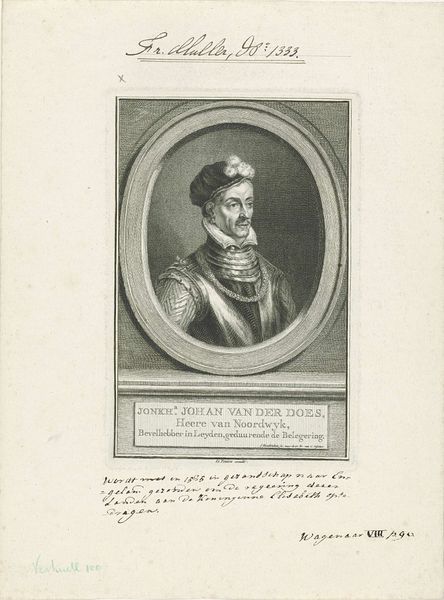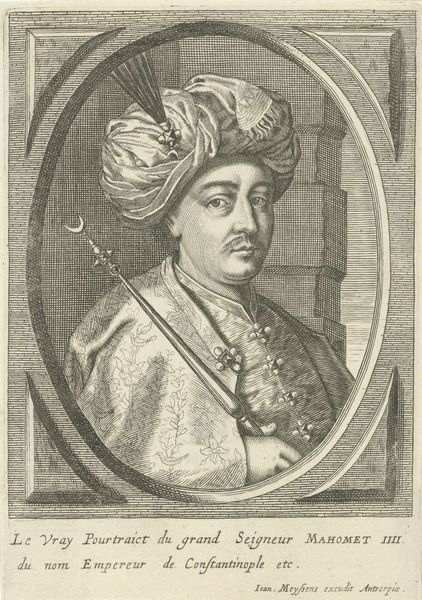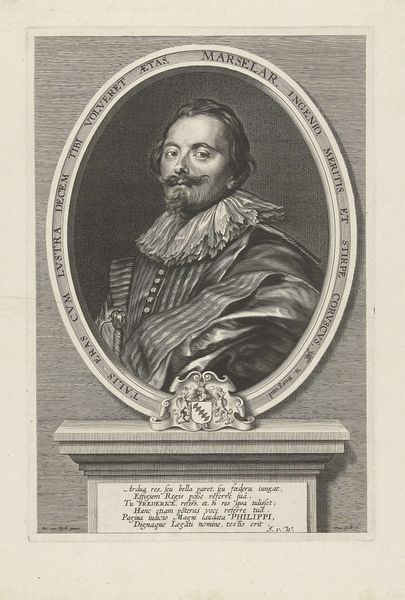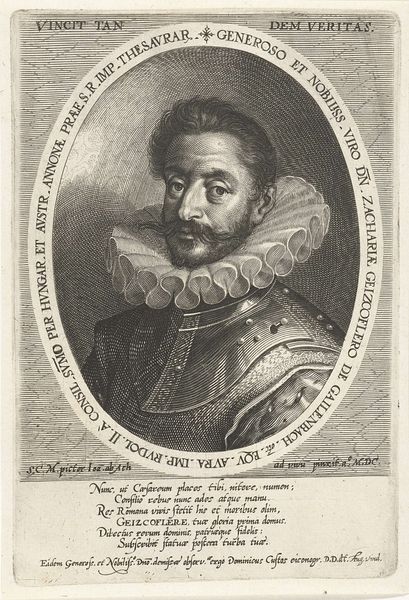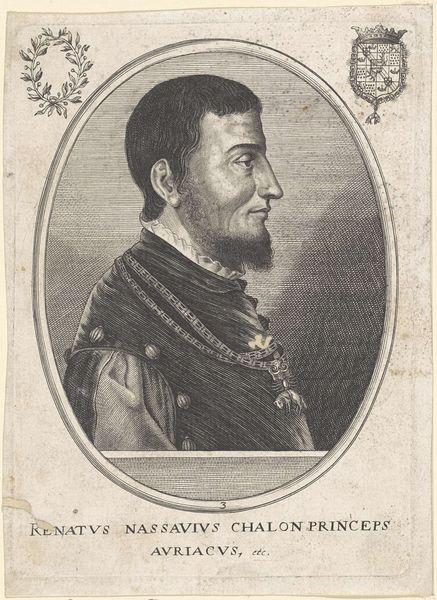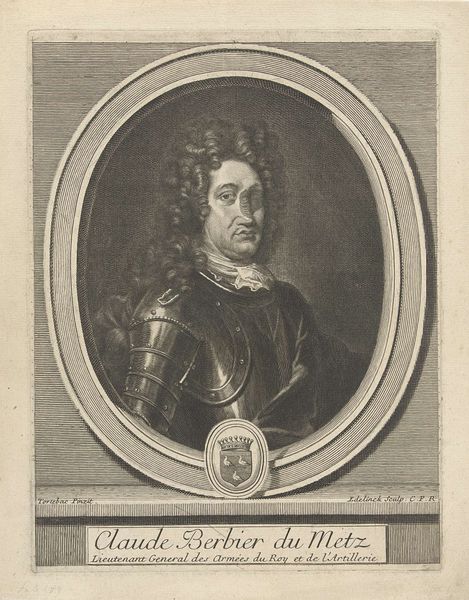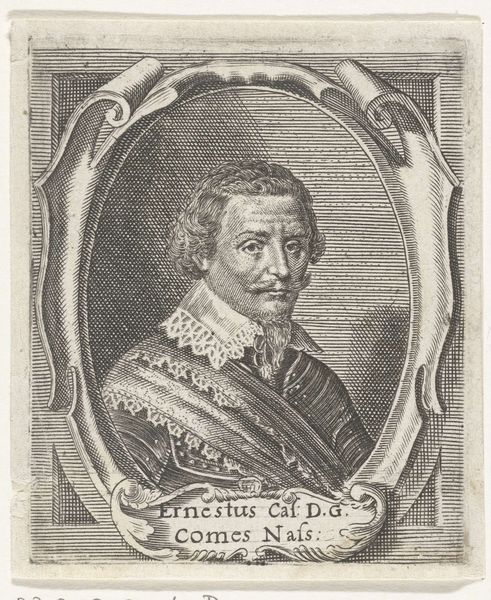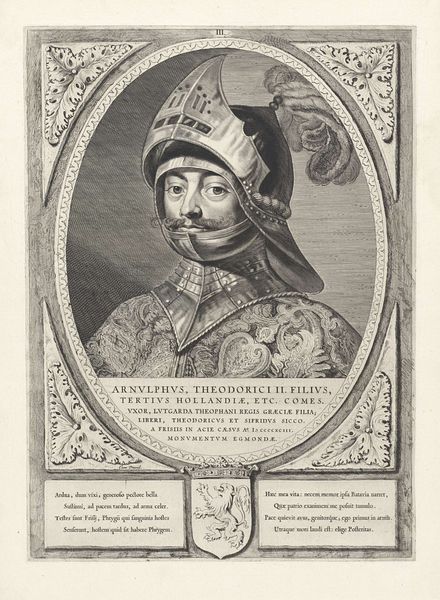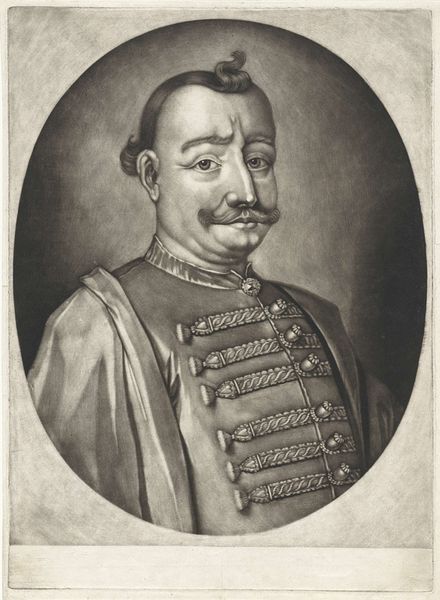
print, engraving
#
portrait
#
baroque
# print
#
old engraving style
#
engraving
Dimensions: height 182 mm, width 136 mm
Copyright: Rijks Museum: Open Domain
Curator: Here we have Pieter Schenk's engraving, "Portret van Jan III Sobieski, koning van Polen," created sometime between 1670 and 1713. It's part of the Rijksmuseum's collection. What are your initial thoughts on it? Editor: My first impression? It feels quite imposing, even austere. The dark shading and the king's serious expression definitely convey a sense of power and authority. The composition, contained within that oval, adds a sense of formality. Curator: Absolutely. Schenk really captures the gravitas expected of royalty at the time. Sobieski, a significant figure in Polish history, particularly known for his victory against the Ottoman Empire at the Battle of Vienna in 1683. This print likely served to propagate that heroic image. Editor: Right. The inscription below, "Ioannes III D.G. Rex Poloniae," underscores that divine right to rule. The text underneath, although partially in Dutch, clearly references his martial prowess and mentions Vienna explicitly. The image reinforces that he was, and continued to be after his death, positioned as the savior of Europe. It becomes propaganda! Curator: I see the engraving and text as reinforcing not only the king's image, but as contributing to the broader narrative surrounding Polish national identity, even today! Editor: The baroque style certainly adds to that dramatic flair. Look at the intricate detailing on his armor! I find myself thinking about accessibility, though. This being a print, how widely circulated would images like this be at the time? Who was the intended audience? Curator: Fair point! Prints, while more accessible than painted portraits, would still largely circulate among the educated elite and those within the political sphere. Though, in truth, through copies and re-prints, some aspects could trickle down. I agree that the use of text and image combined creates a potent message regardless of class. Editor: Indeed, it shows us how constructed these visual representations of power are. It’s a calculated projection of strength, solidified through artistry. I’m always so fascinated when such images persist centuries later. Curator: Precisely. It leaves me wondering, how do contemporary societies perpetuate power in this way, even now? The print has an artistic quality to be certain, but it offers a strong argument of carefully maintained political imagery.
Comments
No comments
Be the first to comment and join the conversation on the ultimate creative platform.
